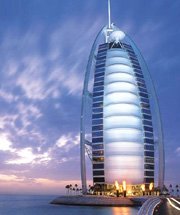
- Home
- Travel Packages
- Top Destination
-
Travel Attraction
By Category
Top Attraction

- Travel Agents
- Car Rentals
- Hotels
Guinea-Bissau is officially known as the Republic of Guinea-Bissau. The unexplored wildlife and unpolluted beaches of Guinea-Bissau provide a peaceful atmosphere for the tourist. If you are looking for a vacation, away from the rush, then Guinea-Bissau is the place for you. The tourist spots of Guinea-Bissau are never overcrowded and thus offer a relaxed atmosphere to the visitor.
West African CFA Franc (XOF)
36,125 square kilometers (14,000 square miles).
1,515,000
Portuguese
245
GMT + 0 hours
There are no major climate changes in Guinea-Bissau. It is warm throughout the year. The average temperature of Guinea-Bissau is 26.3 degrees Celcius (79.3 degrees F). The period of June to October is the rainy season in Guinea-Bissau. There is an average rainfall of 2,024 MM (79.7”). The rest of the months are largely dry.
Guinea-Bissau lies between the latitudes 11 degrees and 13 degrees North and longitudes 13 degrees North and 17 degrees West. The highest point of Guinea-Bissau is at 300 meters (984 ft.). The interior parts of Guinea-Bissau are Savanna while swamps of mangroves mark the coastline.
Suitable Visiting Months : December to February is the best time to visit Guinea-Bissau. The weather is dry and not too hot during this time. The heat and the rains may provide obstructions in the other months.
Guinea-Bissau is accessible through airways, waterways and roadways. There are 3 airports in Guinea-Bissau, one each at Bissau, Bubaque and Cufar. Apart from them, several rivers and roads also connect Guinea-Bissau to the rest of the world. The major seaports and harbors are Bissau, Buba, Cacheu and Farim. The Trans-West African Coastal Highway connects Guinea-Bissau to 11 countries of the Economic Community of West African States (ECOWAS).
The nearest representation of Guinea-Bissau has to be contacted for the issue of Visa. A Passport and Visa are required by all the travelers to Guinea-Bissau except the following:
Passport Exemption
Visa Exemption